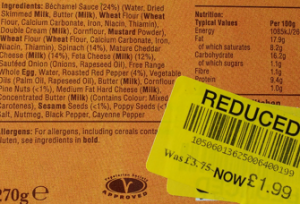 I tweeted last week about the tiny percentage of publishers who provide accessibility information about their products. Since then, preparing for Thursday’s course on e-books and disabled readers – what to look for in accessibility statements, I started studying the accessibility statements that do exist. It has been a salutary experience.
I tweeted last week about the tiny percentage of publishers who provide accessibility information about their products. Since then, preparing for Thursday’s course on e-books and disabled readers – what to look for in accessibility statements, I started studying the accessibility statements that do exist. It has been a salutary experience.
At the risk of sounding repetitive, it’s back to food labelling again. I can tell at a glance if a pie or pizza costing £1.99 will suit my dietary needs. I have no idea if my university’s e-book platform or content (costing thousands of pounds) will meet my study needs.
With a few notable exceptions, most of the accessibility information you will find on a publisher or aggregator website falls into one of three categories:
1) technical information that claims compliance with one or other set of accessibility standards.
2) cultural information that explains how committed the organisation is to accessibility and how that commitment translates into working on a variety of projects.
3) a link for getting an accessible format or
4) misleading accessibility information that is actually about the accessibility of the supplier’s website rather than their product.
Ignoring number 4, the other three are the food labelling equivalents of
“We meet all major hygiene standards”
“We endeavour to only use the best ingredients” and
“Here’s a phone number for the company nutritionalist”
Even where I’ve found some good information (which I occasionally do) it has not necessarily been straightforward to find it. And – frustratingly – publishers that I know have a high accessibility commitment and a robustly accessible product are often failing to reflect it in the absence of practical guidance they provide about their files and how they can be used.
The 2018 ASPIRE ebook audit takes place from mid June to mid July. Dozens of university libraries will be auditing the accessibility information of as many educational suppliers (publishers and aggregators) as we can get to. We will be scoring them on the information provided, based on practical, verifiable user needs. If you are a supplier (or a librarian who knows and loves their suppliers) we strongly encourage you to get involved and make sure your score reflects your product, not a gap in your information.
